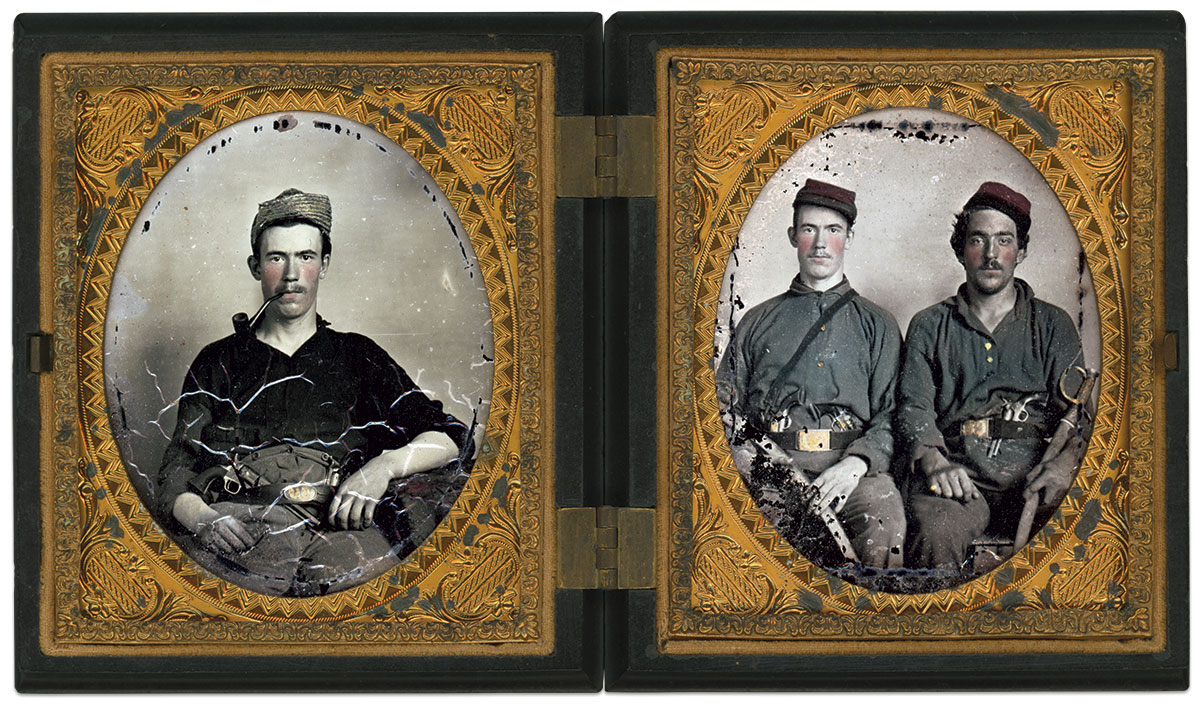
The light artillery model swords cradled by these unidentified pards and the Burnside blouses suggest they served in Battery B of the 1st Rhode Island Light Artillery. It participated in major Eastern actions from Ball’s Bluff to Appomattox. The men show off pistols tucked into their waist belts: The soldier on the left of the paired portrait (and pictured separately) is armed with a Colt pocket pistol and a Colt 1862 police revolver, and his friend with another Colt pocket pistol. Blue-tinted blouses and caps highlighted in red complete the picture. The soldier pictured individually, likely the original owner of both images, strikes a more casual pose with the same pistols, a Pattern 1839 waist belt plate, and an unusual cap and pipe.
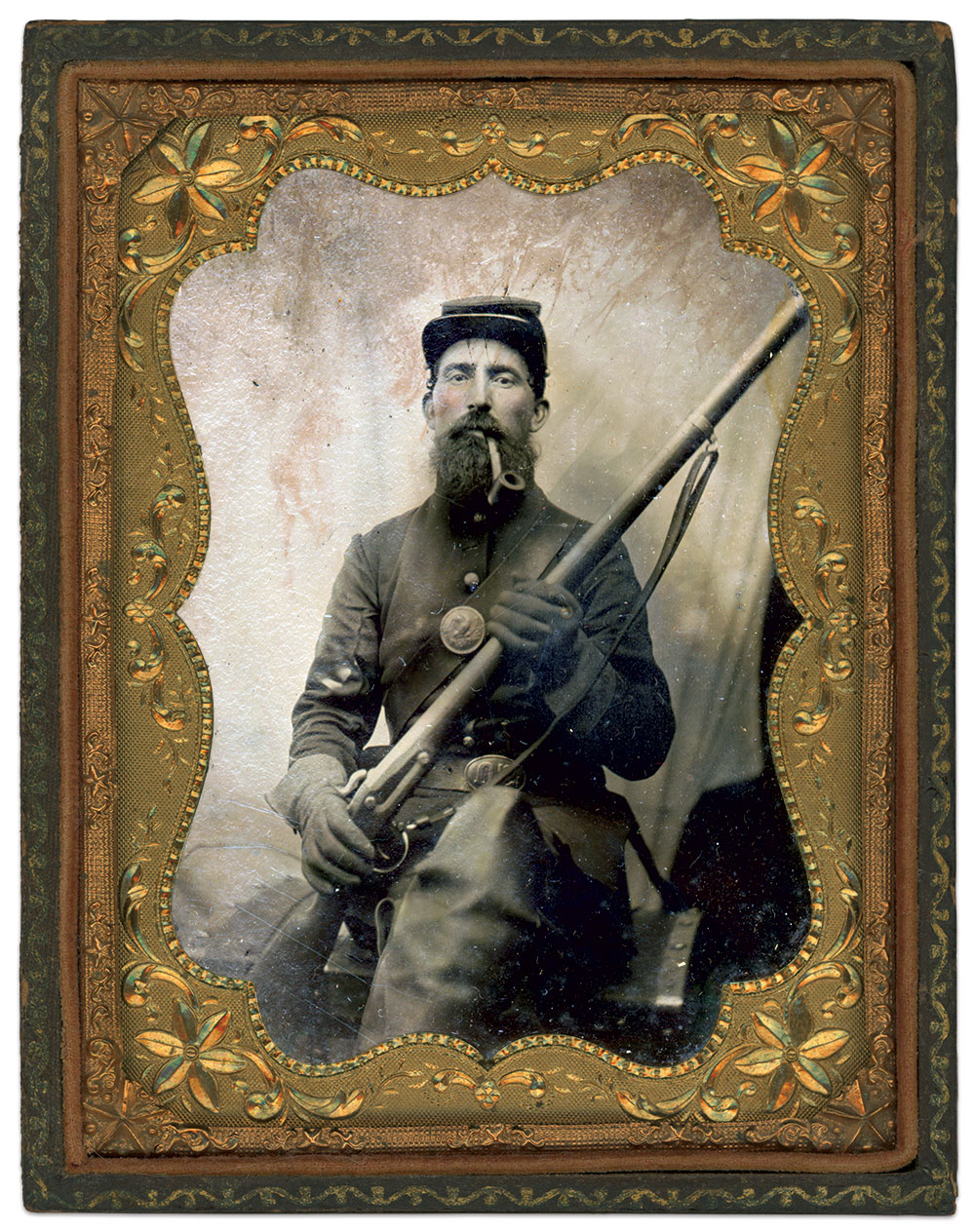
A pipe-smoking Union infantryman grips a U.S. Model 1842 musket in his gloved hands. Note that his oval US waist belt buckle has been flipped upside down to compensate for the reversal effect of hard-plate photographs. Also of interest is his knee-length boots and unusual seat—a trunk with metal edges and rivets.
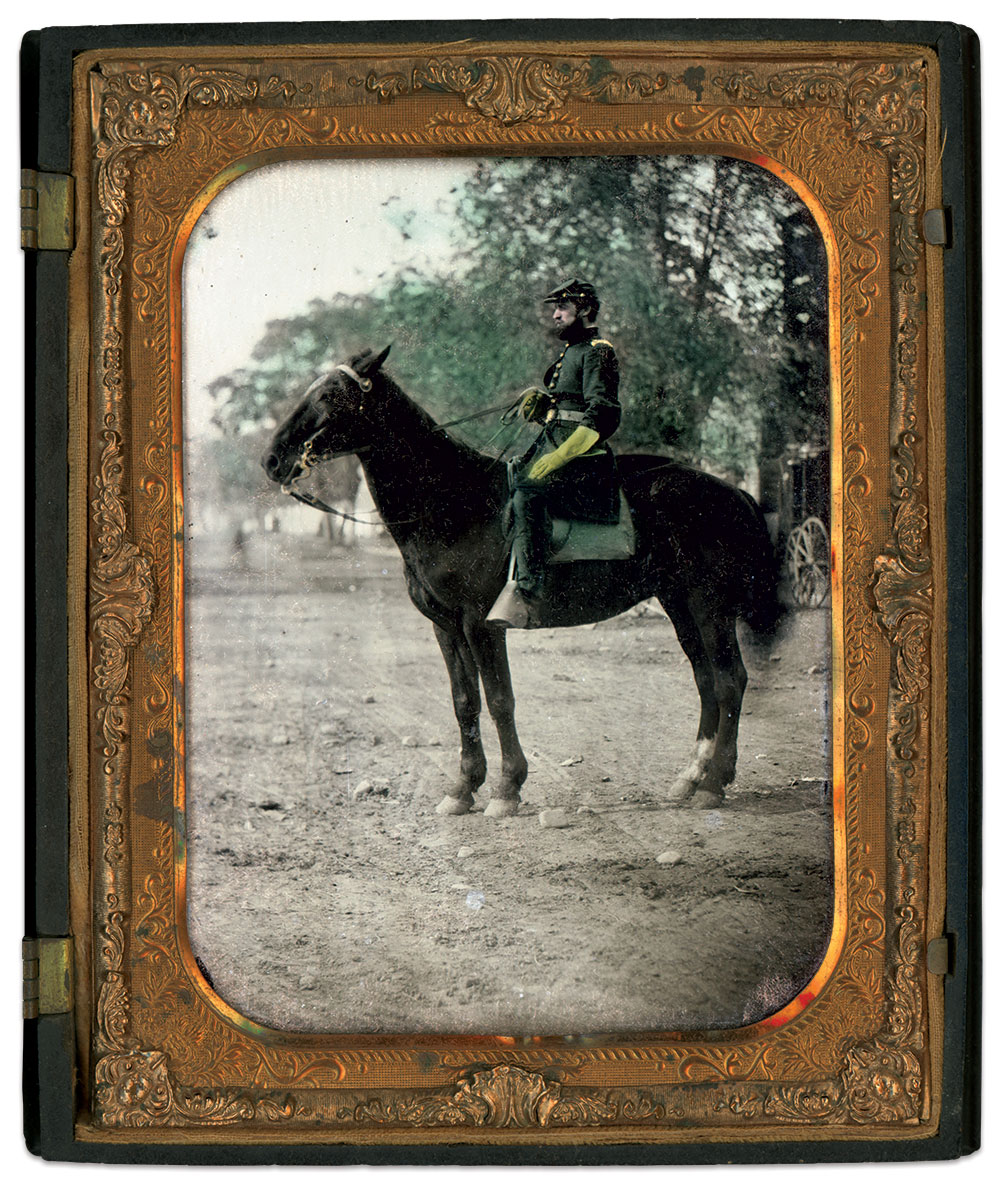
A Union officer and his mount look off into the distance from a city street.

A Confederate first lieutenant poses in a tailored double-breasted coat consistent with his rank.
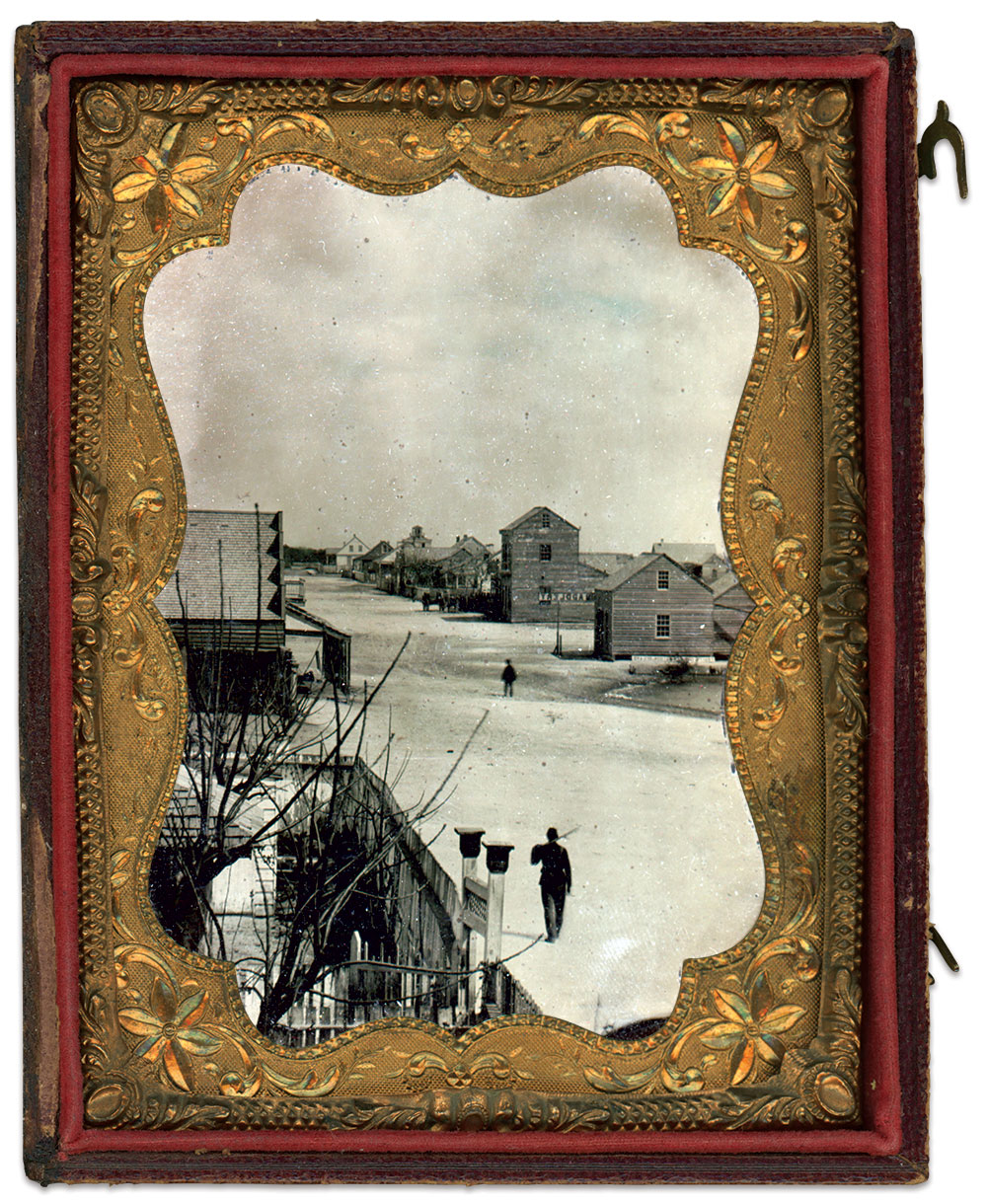
A lone infantryman walks through town with a shouldered musket, heading towards a group of soldiers in front of a saddler’s store.
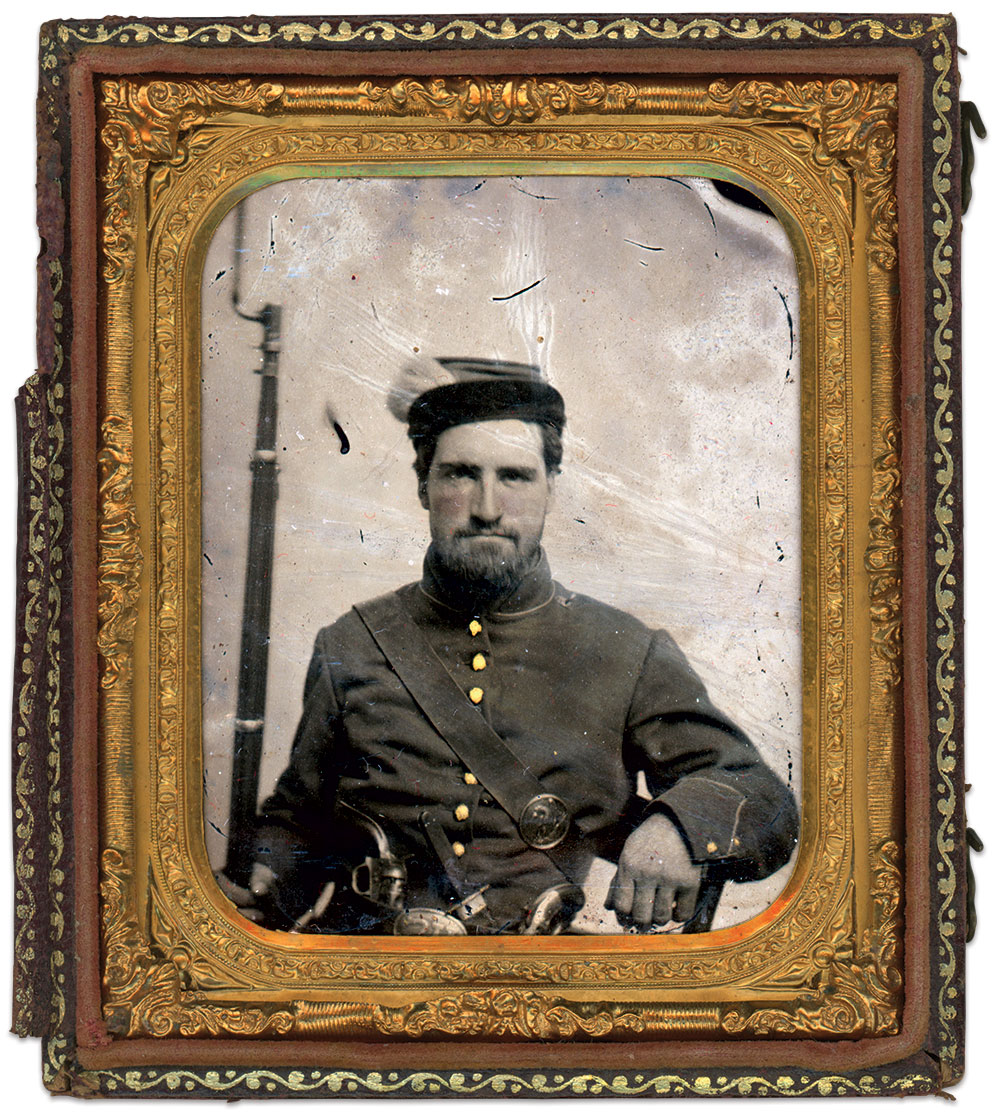
A Pennsylvania Bucktail poses with his P53 Enfield Rifled Musket.
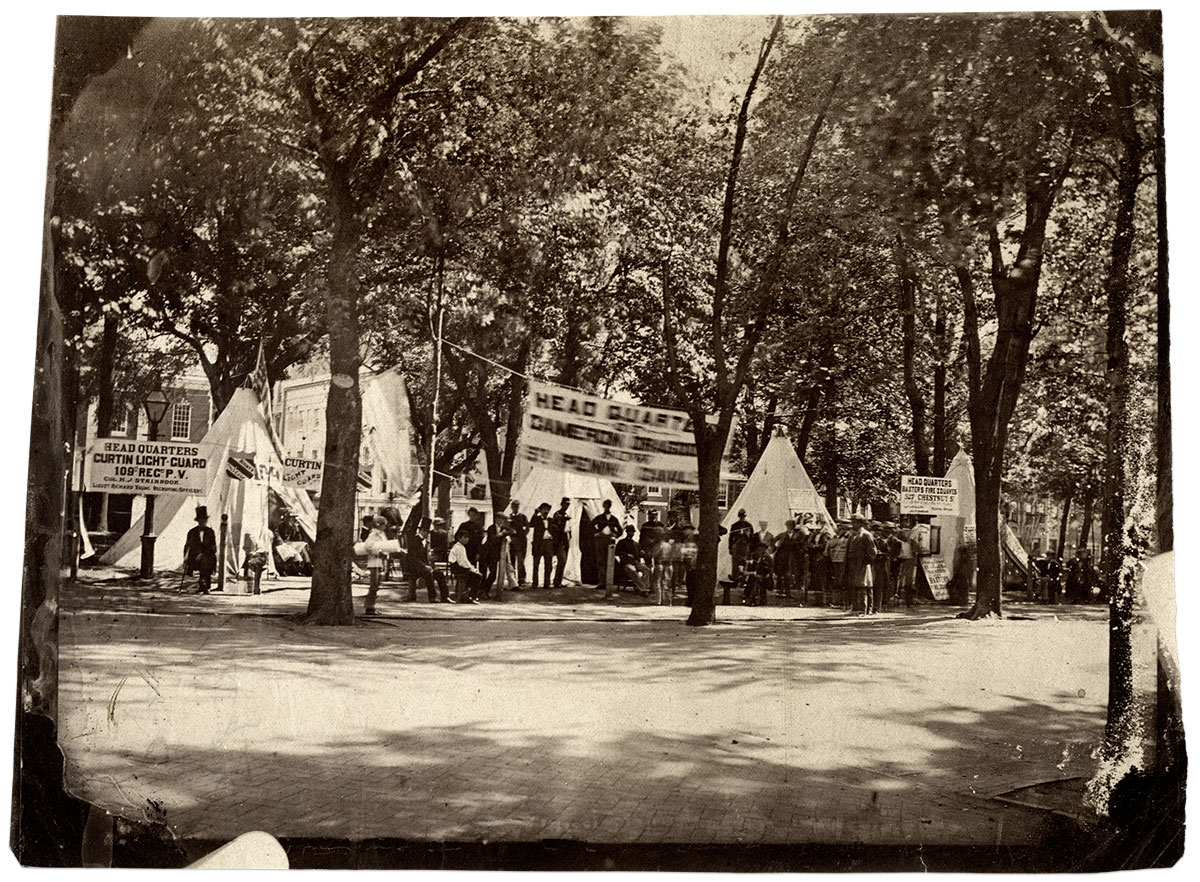
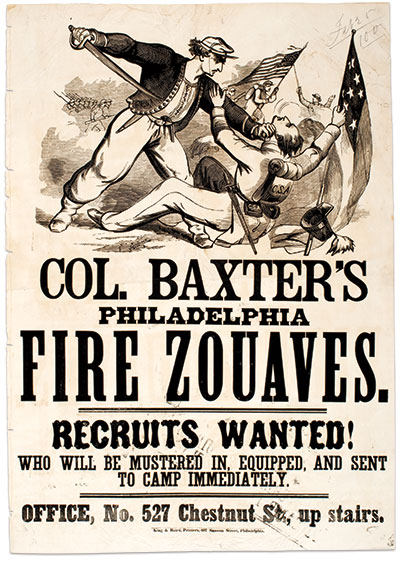
Soldiers and civilians congregate along Philadelphia’s Chestnut Street awash with recruiting signage for the Curtin Light Guard, Cameron Dragoons, and the Baxter Fire Zouaves. Two street addresses, 527 and 533, indicate this spot is located west of downtown. The photographer took this image in the spring of 1862.
A recruiting notice in the Jan. 29, 1862, Philadelphia Inquirer notes the headquarters for the Curtin Light Guard at this location “have been conveniently fitted up with sleeping bunks, and a bathroom for three hundred men. And also a kitchen which cooks for the entire number.” The regiment mustered into service as the 109th Pennsylvania Infantry for three years and fought in many battles, including Chancellorsville, which cost the life of Col. Henry J. Stainrook, whose name appears on the banner hanging from the lamppost.
The Cameron Dragoons, or the 5th Pennsylvania Cavalry, began its service in the summer of 1861 and spent much of the war in the Department of Virginia and North Carolina with the Army of the James. It participated in numerous operations, including the Siege of Petersburg and the Appomattox Campaign.
The nattily-attired soldiers of Baxter’s Fire Zouaves, or the 72nd Pennsylvania Infantry, also saw significant action during the war. Their service included the battles of Ball’s Bluff, Antietam, Fredericksburg and Gettysburg, and the Overland Campaign.
SPREAD THE WORD: We encourage you to share this story on social media and elsewhere to educate and raise awareness. If you wish to use any image on this page for another purpose, please request permission.
LEARN MORE about Military Images, America’s only magazine dedicated to showcasing, interpreting and preserving Civil War portrait photography.
VISIT OUR STORE to subscribe, renew a subscription, and more.

